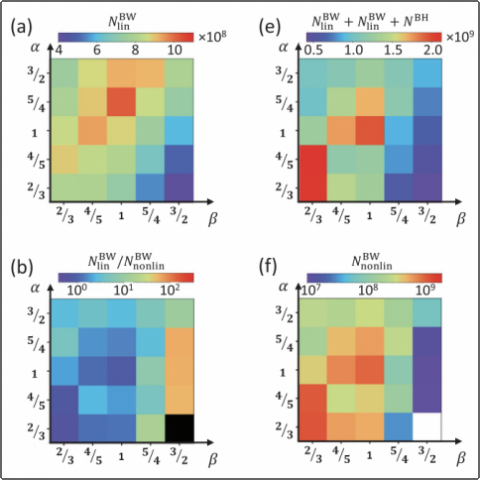Y. He, T. G. Blackburn, T. Toncian, and A. Arefiev, "Achieving pair creation via linear and nonlinear Breit-Wheeler processes in dense plasmas", Physics of Plasmas 29, 053105 (2022).
It has been recently shown that over 109 electron–positron pairs can be produced from light alone at an experimentally accessible laser intensity of 5×1022 W/cm2 by irradiating a target with a pre-formed channel by two counter-propagating laser pulses. Although targets of variable length and channel density have been successfully fabricated and used in recent experiments involving high-intensity lasers, the impact of these parameters on the pair yield by different pair creation processes is yet to be understood. In this paper, we explore, using two-dimensional particle-in-cell simulations, the impact of the channel density and length on pair production by the linear Breit–Wheeler process, nonlinear Breit–Wheeler process, and Bethe–Heitler process at fixed laser intensity. We find that these parameters can be successfully used to increase the linear Breit–Wheeler pair yield. More importantly, the relative contribution of each process can be adjusted by varying the same parameters. We show that this approach allows us to completely eliminate the yield from the nonlinear Breit–Wheeler process while maintaining a significant yield from the linear Breit–Wheeler process. The Bethe–Heitler process plays a secondary role in the considered system, so the majority of the positrons inside the channel are produced from light alone. Our results indicate that a structured target irradiated by two laser beams has the potential to be a versatile platform for future experimental studies of the Breit–Wheeler pair production processes, with the target parameters serving as control knobs.
